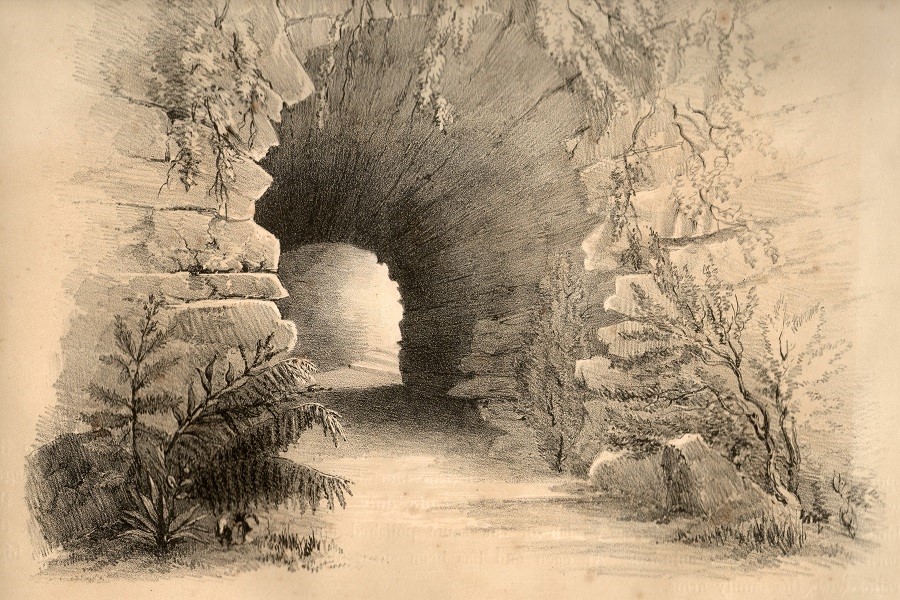The historic paddocks surrounding a famous Bath landmark are being restored to enable visitors to experience a glimpse of William Beckford’s gardens as they were presented almost 200 years ago – and as part of the restoration works the long-lost grotto tunnel has now been discovered.
Since 1827, William Beckford’s extraordinary tower has been a feature high above the city of Bath. It was intended to house his library, art collection and be a retreat from the hubbub of Bath. In order to access it, Beckford reputedly bought a mile of land between his home in Lansdown Crescent and the tower itself and created a series of interlinked gardens, plantations and rustic seats, with views over the Avon Valley, culminating at the Tower. This became known as Beckford’s Ride.
In the two centuries since his death in 1844, the original walls of the tower garden fell into disrepair, the paddocks became overgrown, other parts of the ride passed into different ownership and the famed grotto tunnel was filled-in, making its precise location something of a mystery.
In August, experts and volunteers from Bath Preservation Trust (BPT) set out to rediscover the grotto tunnel, both to confirm its location, and establish what condition it was in after having been buried for so long. Armed with little more than an old black-and-white photo to work from, the team was able to narrow down the probable location of the west entrance, to a rather unpromising patch of brambles in the corner of the paddocks.
With the aid of a mechanical digger, the excavation commenced. It wasn’t long before the top of a rustic, dry-stone arch appeared. Excited by their discovery, they pressed on and by the end of the day, had dug down to a depth of three and a half metres, with a large part of the tunnel entrance now exposed.
“While not quite on a par with the discovery of Tutankhamun’s tomb, architect Clive England and structural engineer Ed Morton, our own Carnarvon and Carter were able to survey the grotto, and establish that for the most part, it was in very good condition,” says BPT’s Capital Works Director Simon Butler.
“It was a wonderful moment, to finally be able to see the entrance to the very tunnel that allowed William Beckford to pass unseen under the lane, which is still to be found almost opposite the current Granville Road. Unfortunately, in the years since Beckford’s death, this feature has become buried, and its exact location lost. For safety reasons, we’ve backfilled the grotto tunnel, while we develop the design required to make it a safe and exciting part of the Beckford’s Tower visitor experience. If it can be stabilised and made safe for public access, we hope to be able to open the grotto tunnel, so that visitors will be able to once again walk along the paddocks’ avenue of lime trees, following the same route Beckford took daily to and from his magnificent tower.”
Development grants awarded by the National Lottery Heritage Fund, and Historic England are also enabling Bath Preservation Trust to repair and conserve the tower, and to re-examine the way in which they share the story of William Beckford’s links to the transatlantic slave trade.
Alex Sherman, CEO of Bath Preservation Trust explains: “Opening up the Grotto tunnel for visitors to enjoy is one of the key objectives for the ‘Our Tower’ project. While the east end of the tunnel has been blocked by development, our intention is re-open this space, for the first time in perhaps 60 years, reinstating the steps from which one would have first caught sight of the tower.”


